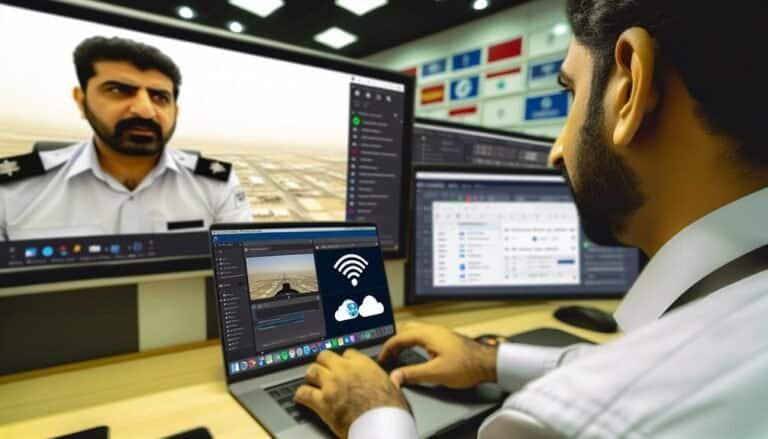Cultivating a Healthy Work-Life Balance When Working Remotely
In an age where remote work has become increasingly prevalent, the quest for a healthy work-life balance has taken on a new level of complexity. The traditional boundaries between professional and personal lives have become blurred, making it challenging to disengage from work when it's just a few steps away.
However, the pursuit of equilibrium remains crucial for overall well-being and sustained productivity. Finding effective strategies to navigate this new terrain is essential, and can greatly impact both personal and professional fulfillment.
Key Takeaways
- Designate a specific workspace within the home.
- Set realistic daily goals and maintain a prioritized task list.
- Incorporate stress management techniques and prioritize mental and physical well-being.
- Utilize real-time messaging platforms, video meetings, and project management tools for efficient communication and collaboration.
Setting Boundaries and Establishing Routines
How can remote workers set boundaries and establish routines to maintain a healthy work-life balance?
Establishing boundaries is crucial for remote workers to delineate between work and personal life. Designating a specific workspace within the home and adhering to set working hours can help create a mental division between professional and personal life. Communicating these boundaries to colleagues and family members is equally important to ensure respect for designated work times. Additionally, setting realistic daily goals and adhering to a prioritized task list can aid in maintaining a structured workday.
Daily rituals play a significant role in establishing routines for remote workers. Creating a morning routine that includes activities such as exercise, meditation, or a leisurely breakfast can set a positive tone for the day. Similarly, winding down rituals at the end of the workday, such as going for a walk or engaging in a hobby, can signal the transition from work to personal time. Adhering to consistent meal times and scheduling regular breaks can also contribute to a well-established routine.
Managing Time Effectively
To excel as a remote worker, effectively managing time is essential for maintaining productivity and achieving a healthy work-life balance. When working remotely, it can be challenging to stay focused and organized. Here are five key strategies for managing time effectively:
- Prioritizing tasks: Identify the most important tasks for the day and allocate dedicated time to focus on them. Setting clear priorities can help you stay on track and ensure that essential work gets done.
- Creating a structured schedule: Establish a daily routine that includes dedicated work hours, breaks, and specific time slots for personal activities. Having a structured schedule can help you maintain a sense of normalcy and balance in your day.
- Setting time limits for tasks: Allocate specific time frames for completing tasks to avoid spending too much time on one assignment, which can disrupt your overall schedule.
- Minimizing distractions: Identify common distractions in your remote work environment and take proactive steps to minimize them. This may involve setting boundaries with family members, finding a quiet workspace, or using productivity tools to stay focused.
- Utilizing time management tools: Explore various time management apps and techniques to enhance your productivity and organization, such as task lists, time-tracking apps, and the Pomodoro technique.
Nurturing Mental and Physical Well-being
Maintaining a structured schedule and effectively managing time are foundational to nurturing mental and physical well-being while working remotely. Stress management is crucial in achieving this balance.
It's essential to incorporate stress management techniques into the daily routine. This can include mindfulness exercises, deep breathing, or taking short breaks to stretch and relax.
Setting boundaries between work and personal life is also vital. Establishing a designated workspace and adhering to set work hours helps in creating a clear separation between professional and personal time.
Additionally, incorporating self-care strategies is imperative. Engaging in regular physical activity, eating healthily, and getting sufficient sleep are fundamental to sustaining physical well-being. Prioritizing leisure activities and hobbies outside of work hours also contributes to mental wellness.
Taking regular breaks and disconnecting from electronic devices can prevent burnout and promote mental relaxation. By adopting these stress management and self-care strategies, individuals can maintain a healthy work-life balance while working remotely, leading to improved overall well-being.
Communicating and Collaborating Efficiently
Effectively communicating and collaborating while working remotely requires a seamless integration of digital communication tools and a proactive approach to team engagement. To ensure successful virtual teamwork and remote collaboration, consider the following:
- Utilize real-time messaging platforms such as Slack or Microsoft Teams to facilitate quick and efficient communication among team members.
- Schedule regular video meetings to maintain a sense of connection and enable face-to-face interactions, fostering a more personal and effective means of communication.
- Establish clear communication protocols to ensure that everyone understands the preferred methods and channels for communication within the team.
- Encourage active participation by creating opportunities for team members to share ideas, provide feedback, and engage in discussions through collaborative digital platforms.
- Implement project management tools like Asana or Trello to streamline workflows, assign tasks, and track progress, promoting transparency and accountability within the team.
Embracing Flexibility and Adaptability
Embracing flexibility and adaptability is essential for successfully navigating the dynamic challenges of remote work environments. Adapting to change is a critical skill when working remotely, as it requires the ability to quickly adjust to new circumstances and remain productive. Being open to change allows individuals to stay agile and responsive in an ever-evolving work landscape.
Remote teamwork also demands flexibility, as team members must be adaptable to different communication styles, time zones, and work preferences. Embracing flexibility enables employees to collaborate effectively and maintain a cohesive team dynamic despite physical distance.
To embrace flexibility and adaptability, it is essential to cultivate a mindset that welcomes change and innovation. It involves being open to new ideas, processes, and technologies that can enhance remote work efficiency and effectiveness. Additionally, creating a supportive and inclusive remote work culture encourages employees to adapt to different working conditions and schedules while still achieving collective goals.
Ultimately, by embracing flexibility and adaptability, individuals can thrive in remote work environments, contribute to successful remote teamwork, and achieve a healthier work-life balance.
Conclusion
In the pursuit of a healthy work-life balance while working remotely, individuals must carefully consider the boundaries they set, the routines they establish, and the ways in which they manage their time.
It is essential to prioritize mental and physical well-being, communicate and collaborate efficiently, and embrace flexibility and adaptability.
By finding balance in these areas, individuals can achieve a harmonious integration of work and personal life, despite the challenges of remote work.







